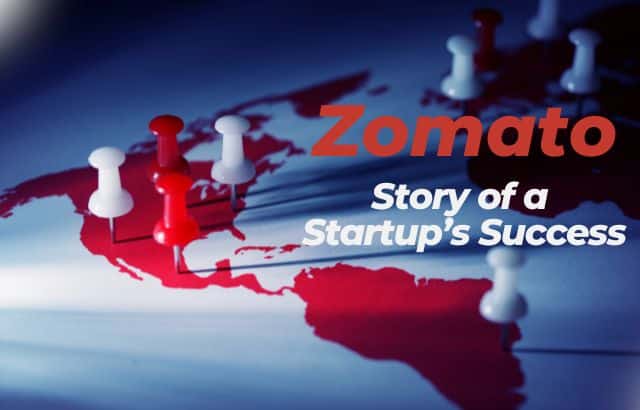Zomato, founded by Deepinder Goyal (born January 31, 1983) and Pankaj Chaddah (born December 27, 1983), began as a simple online restaurant menu aggregator in 2008 and grew into a global food delivery giant. However, Zomato’s journey hasn’t been without hurdles. From financial struggles to overcoming intense competition, Zomato’s story of resilience, adaptability, and innovation provides valuable lessons for entrepreneurs worldwide.
Table of Contents
The Early Days: A Vision Born from a Simple Idea
Zomato started with a simple concept: digitizing restaurant menus to help people make dining choices. At the time, co-founders Goyal and Chaddah noticed a common problem—office employees struggling to find menu cards for nearby restaurants. This small observation sparked the idea for a food-tech platform.
As Hirav Shah aptly puts it, “True innovation often begins by solving everyday challenges. The simplest ideas can lead to the biggest transformations.” This insight became the backbone of Zomato’s mission.
Zomato’s Inspiring Turnaround story –Rapid Growth and the Global Expansion

After its initial success, Zomato expanded rapidly. The company ventured into international markets, setting up operations in countries like the UAE, Australia, and the United States. By focusing on user experience, Zomato introduced features like restaurant reviews, delivery options, and discounts that made it a go-to platform for food lovers.
However, rapid expansion came with its own set of challenges. The startup faced financial strain, high operational costs, and cultural adaptation issues in international markets. Despite the hurdles, Zomato’s growth mindset kept it moving forward, powered by a commitment to customer satisfaction and constant innovation.
“Growth is never linear, especially in startups. Challenges along the way are not setbacks but stepping stones,” says Hirav Shah, reflecting on Zomato’s resilience.
Zomato’s Inspiring Turnaround story – Facing Financial Challenges and Rising Competition

Zomato hit a major obstacle in the mid-2010s. The company faced intense competition from emerging food delivery startups like Swiggy and UberEats in India. Both competitors aggressively entered the market, pushing Zomato to rethink its business model. The heavy investment in global expansion left Zomato financially strained, raising concerns about its sustainability.
Despite these challenges, Zomato didn’t shy away from change. Instead, it streamlined its focus on core markets and restructured its operations to cut costs, optimize delivery times, and offer better deals to its customers. This period marked a significant turnaround, as Zomato chose adaptability over rigid growth.
“Flexibility and resilience are key ingredients in any turnaround story,” says Hirav Shah. “A business that learns to adapt in crisis is a business that’s built to last.”
The Breakthrough Moment: The Food Delivery Boom
With a renewed focus, Zomato strengthened its food delivery services, strategically positioning itself for the boom in online food ordering. The company introduced Zomato Gold, now rebranded as Zomato Pro, which offered exclusive discounts and deals, attracting a huge subscriber base and building customer loyalty.
Zomato’s success also coincided with the rising demand for online food delivery in India, fueled by urbanization and a digital-savvy population. The timing was perfect, as Zomato capitalized on this shift, becoming one of the largest food delivery platforms in the country.
“Opportunities often come disguised as challenges,” Hirav Shah says. “The right strategy at the right time can turn adversity into advantage.”
The IPO: Marking a New Era
In 2021, Zomato took a monumental step by launching its Initial Public Offering (IPO), becoming India’s first food-tech unicorn to go public. The IPO was a massive success, with shares oversubscribed multiple times. This event marked Zomato’s evolution from a struggling startup to a market leader in the food-tech industry.
The IPO gave Zomato the financial strength it needed to expand further, invest in technology, and solidify its position in the food delivery market. Zomato’s successful IPO also paved the way for other Indian startups, proving that homegrown tech companies could succeed on a global scale.
“A public offering is not just a financial milestone—it’s a testament to a brand’s resilience, credibility, and vision,” notes Hirav Shah. “It’s the ultimate validation of a company’s journey.”
Zomato’s Inspiring Turnaround story –Lessons
Zomato’s journey offers several key takeaways for aspiring entrepreneurs:
- Adaptability: Zomato’s ability to shift focus when facing financial challenges and competition highlights the importance of adaptability in business.
- Customer-Centric Approach: Zomato’s dedication to enhancing the customer experience through features like reviews, discounts, and faster delivery times set it apart in a competitive market.
- Strategic Partnerships and Investments: By forming partnerships and investing in technology, Zomato positioned itself as a trusted platform with high customer engagement.
- Timing and Opportunity: Zomato seized the food delivery boom in India by being well-prepared with the right offerings at the right time.
- The Power of Going Public: Zomato’s IPO not only strengthened its financial position but also boosted its credibility, inspiring other startups to aim for similar milestones.
“Success is a journey, not a destination. Each step, each pivot, and each challenge adds to the story,” Hirav Shah remarks, underscoring the importance of resilience in business.
FAQs on Story of a Startup’s Success

- When was Zomato founded, and who were the founders?
Zomato was founded in 2008 by Deepinder Goyal (January 31, 1983) and Pankaj Chaddah (December 27, 1983). - How did Zomato start?
Zomato began as an online restaurant menu aggregator to help office employees access restaurant menus, later evolving into a full-fledged food delivery platform. - What were the main challenges Zomato faced?
Zomato encountered financial difficulties, operational challenges in international markets, and competition from other food delivery services. - How did Zomato respond to competition from Swiggy and UberEats?
Zomato adapted its strategy, optimized costs, and improved delivery times, focusing on core markets to remain competitive. - What is Zomato Pro?
Zomato Pro, formerly Zomato Gold, is a subscription service offering exclusive deals and discounts to members. - How did Zomato’s IPO impact the company?
Zomato’s IPO in 2021 provided financial stability, allowing it to expand and invest in technology, marking a major milestone in its journey. - What lessons can entrepreneurs learn from Zomato’s success?
Entrepreneurs can learn the importance of adaptability, customer focus, strategic partnerships, and the power of seizing opportunities. - Why is Zomato considered a turnaround success?
Despite financial challenges and competition, Zomato adapted its strategy, improved services, and achieved success, culminating in a historic IPO. - How has Zomato influenced other Indian startups?
Zomato’s IPO inspired confidence among Indian startups, proving that tech companies from India could thrive on a global scale. - What does Hirav Shah say about Zomato’s journey?
Hirav Shah emphasizes, “Success is a journey, not a destination. Each step, each pivot, and each challenge adds to the story.”










